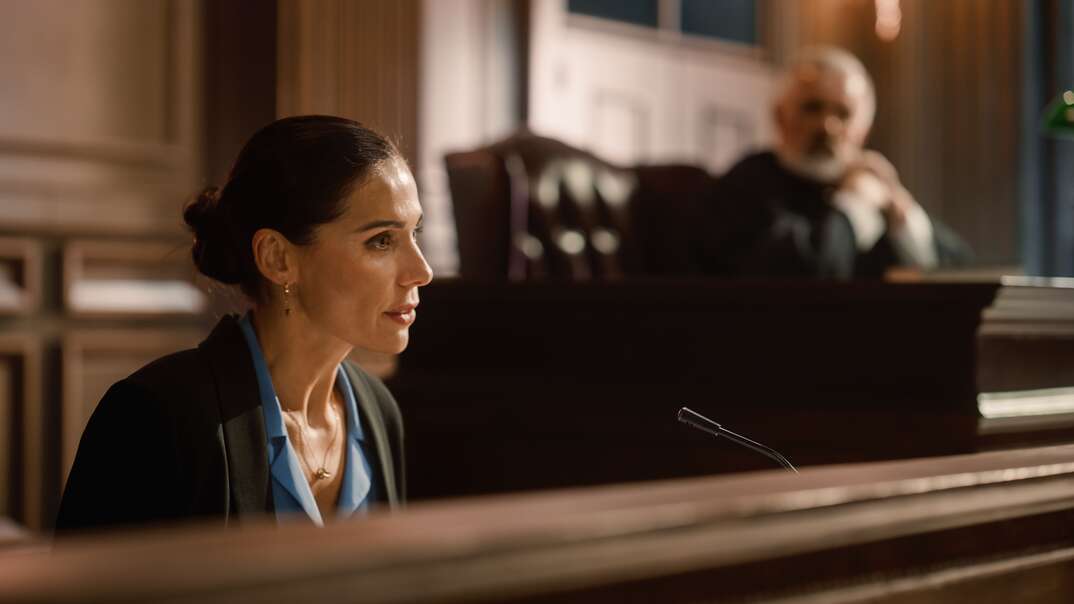- AppliancesElectriciansHVACLandscapingLocksmithPest ControlPlumbingRenovationRoofingT V RepairAll Home Improvement
- Car AccidentClass ActionCorporate LawCriminal DefenseDivorce LawEmployment LawFamily LawFinancial LawLegal AidMedical Injury LawyersMedical MalpracticeReal Estate LawWater Fire RestorationAll Legal
- InvestmentRetirementAll Finance
- Animal InsuranceAutoGeneral InsuranceHealth PolicyHome RentersAll Insurance
- DentalHealth SpecialistsAll Medical
- Animal CareVeterinaryAll Pets
- Auto GlassTowingAll Automotive
Witness Protection: 6 Myths From TV and Movies

Testifying in a criminal case can put some witnesses in danger. The witness protection program exists to protect them. Also known as the Witness Security Program or WITSEC, the program gives witnesses confidence to go to court and testify to help put criminals behind bars.
To keep participants safe, it’s rare that details about the program are revealed to the general public. This has allowed Hollywood to be inventive to suit their movie and television plots.
Witness protection is a program run by the U.S. Marshals Service. It looks after the safety of government witnesses and their families whose lives are in danger because they're testifying against terrorists, organized crime members or other major criminals.
If your testimony puts you at risk, the Department of Justice’s Office of Enforcement Operations determines if you can be accepted into the program. Around-the-clock protection is provided while you’re in a high-threat environment. This may be the only protection needed before you return to your normal life. However, in most cases, you’ll get a new identity and live out your life safely in a new location.
Common Witness Protection Myths
Accurate information about witness protection is hard to come by, but these are some of the myths that appear to be false.
Myth 1: Witnesses Aren't Told Where They’re Going
Movies often depict witnesses being told to pack their bags before they’re taken to an undisclosed location. This may be true at the start of protection when you have yet to testify, but when it comes to your new life, you do get some choice. Generally, the U.S. Marshals Service offers a few options and the family can choose between them.
Gerald Shur, who created the program, made it a point to not send people to their favorite place. If you’ve always wanted to live in Hawaii, it’s likely you’ve told your friends that, and criminals can also find out.
Myth 2: The Government Pays Your Way
When the program first began, witnesses would get money for being on WITSEC; however, this is no longer the case. The U.S. Marshals Service provides monetary support when you begin the program, but it’s phased out after adults on the program have a chance to find a job. The amount provided is based on a formula, so you’ll get more if you’re moved to a high cost of living area, such as New York. It’s important that there are no monetary incentives for witnesses as that could be used by defense attorneys to discredit your testimony.
Myth 3: You’re Always in Danger
Action movies often show the hero stepping in when the witness protection program is compromised. He saves the damsel in distress, and they live happily ever after. The truth is that the witness protection program has a 100% success rate for participants who follow all the rules. No one who abides by the guidelines has ever been harmed or killed. This is achieved by keeping the operation secret. Some sources say that only four people will ever know your new location, so leaks are very rare.
More Related Articles:
- When Do You Need a Lawyer? Determine If You Need to Hire an Attorney
- What Is a Class-Action Lawsuit?
- What Is a Misdemeanor?
- What to Do After a Car Accident
- What Is Power of Attorney?
Myth 4: Witnesses Are Innocent People Who Have Their Lives Uprooted
In the movies, people in witness protection are generally innocents who've had their lives uprooted because they witnessed a crime by chance. The truth is that most people in WITSEC are involved in crime, too. This is true around the world, with a UN study finding that protection of noncriminal witnesses is very rare. Some people claim that 95% of WITSEC participants in the United States are criminals, but there’s no real data to back that up. In general, the innocents put in witness protection are the spouses and children of the people who are testifying.
Myth 5: You Have to Fake Your Death
The truth of this is harder to pin down, as the way the program operates isn’t made public. It’s certainly possible that some participants fake their own deaths, although it’s much easier to simply say witnesses have moved away. As so many participants are criminals, they may take the opportunity for a fresh start and the story that they’ve moved is very believable.
Myth 6: You’re in Witness Protection for the Rest of Your Life
While some people are only in protection for the short time they’re in the most danger (like before and during a trial) most have to stay in protection for much longer. Shur stated that he never told participants it was safe to return. However, the program is completely voluntary. You can choose to come out of protection at any time and no one will force you to stay.
Elocal Editorial Content is for educational and entertainment purposes only. The information provided on this site is not legal advice, and no attorney-client or confidential relationship is formed by use of the Editorial Content. We are not a law firm or a substitute for an attorney or law firm. We cannot provide advice, explanation, opinion, or recommendation about possible legal rights, remedies, defenses, options or strategies. The opinions, beliefs and viewpoints expressed by the eLocal Editorial Team and other third-party content providers do not necessarily reflect the opinions, beliefs and viewpoints of eLocal or its affiliate companies. Use of the Blog is subject to the
Website Terms and Conditions.The eLocal Editorial Team operates independently of eLocal USA's marketing and sales decisions.

